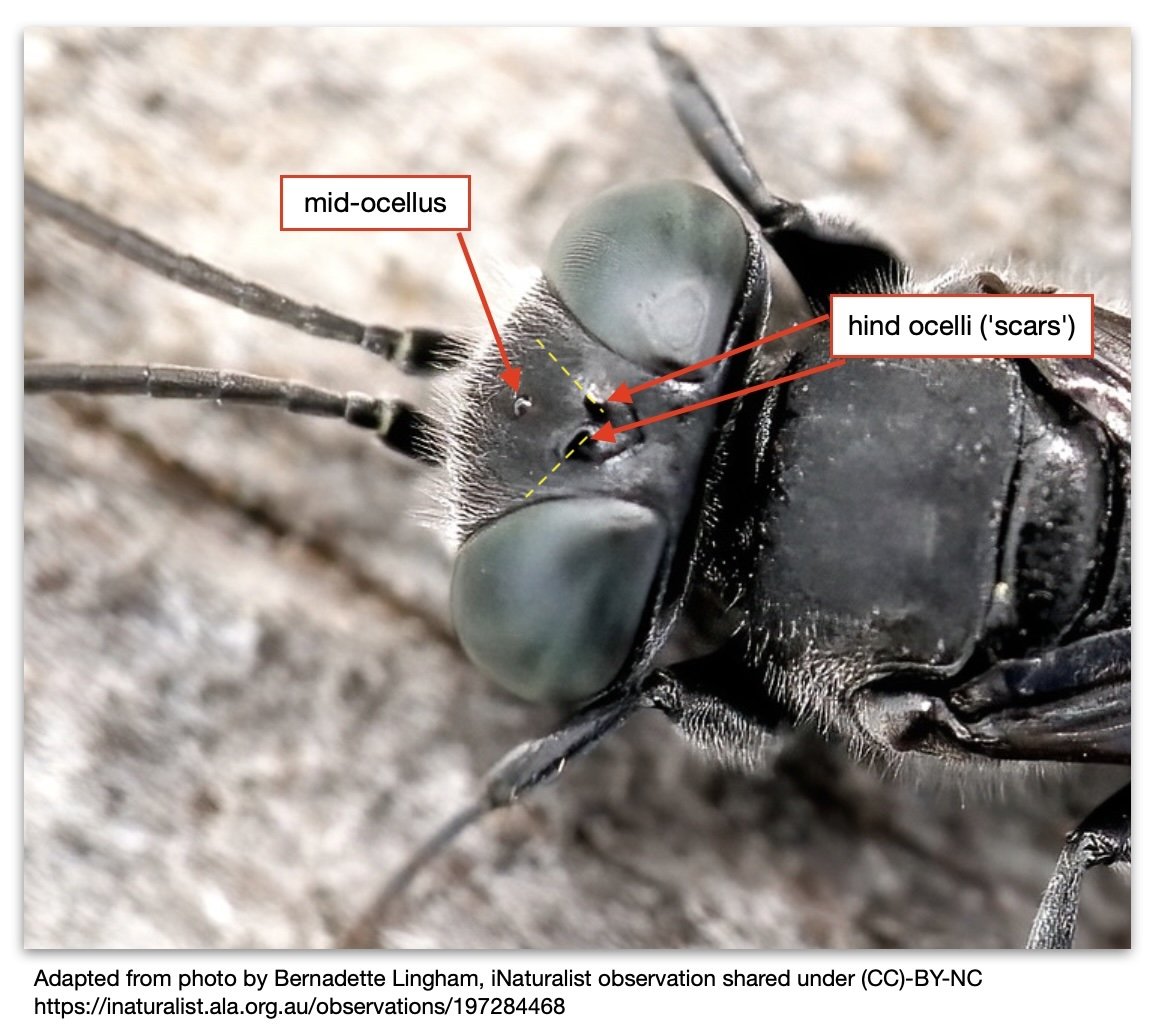
Tachysphex - ocelli and surrounding area
Hind ocelli ovoid, without long tails.
Note too the circular swelling between the mid and hind ocelli (dotted line), plus the mid ocellus NOT in a broad depression.…. both are features diagnostic for the tribe Gastrosericina

Tachysphex – ocelli
Hind ocelli oval, their long axes forming a wide angle (dotted lines) and without a long tail.
Mid ocellus NOT in a deep, transverse depression.

Tachytes - ocelli & adjacent head shape
Elongate hind ocellar scar, ‘golf-club shaped’, with tails nearly parallel. Note that the space between the mid-ocellus and the end of the tail is less than the length of the tail.
Also note the circular swelling between the mid and hind ocelli (dotted line). This is a feature of the subtribe Gastrosericina.

Tachytes - ocelli
The characteristic, long-tailed hind ocellar scar.

Tachytes - ocelli
The angle and lighting in this image really highlight the shape of the hind ocellar scars.

subfamily Larrina - ocellar depression & frons
The deep, broad depression housing the mid ocellus distinguishes the subfamily Larrina, as does the transverse swelling below the mid ocellus (dotted line).

Liris - hind tarsomeres
As this is a female, the hind tarsi and pygidial plate can be used to distinguish between Larra and Liris. The last tarsomere is strongly angled (‘bent’), and bears long claws.
The pygidial plate of Liris is described as “usually extensively setose”. I find this difficult to be confident from a field photo.

subtribe Larrina – mid ocellus
Mid ocellus in a broad, deep depression … subtribe Larrina.

Liris – last tarsomere of hind leg
This is a female in the subtribe Larrina, so the shape of the last tarsomere can be useful. In this image the sharp bend and long claws are particularly obvious. Note, however, that not all Liris have this feature … but apparently no Larra do.

subfamily Larrina - ocellar depression & frons
The deep, broad depression housing the mid ocellus distinguishes the subfamily Larrina, as does the transverse swelling below the mid ocellus (dotted line).
Note also the very shiny frons & vertex, suggestive of Larra rather than Liris (but see details of tarsomeres for confirmation of genus).

Larra - hind tarsomeres
As this is a female, the last tarsal segments of the mid and hind legs can be used to distinguish Larra from Liris. Here the segment is evenly arched, NOT sharply bent as in Liris, and the claws are short.
Note also the hairless, shiny pygidial plate is consistent with Larra.

Larra – orbital sulcus, antennal texture
In Larra, the upper inner angle of the eye is often bordered by a deep groove (‘sulcus’) … this is absent in Liris.
The scape and pedicel in many Larra species is conspicuously shining, in contrast to the remaining antennal segments. Again, this is not the case in Liris.












